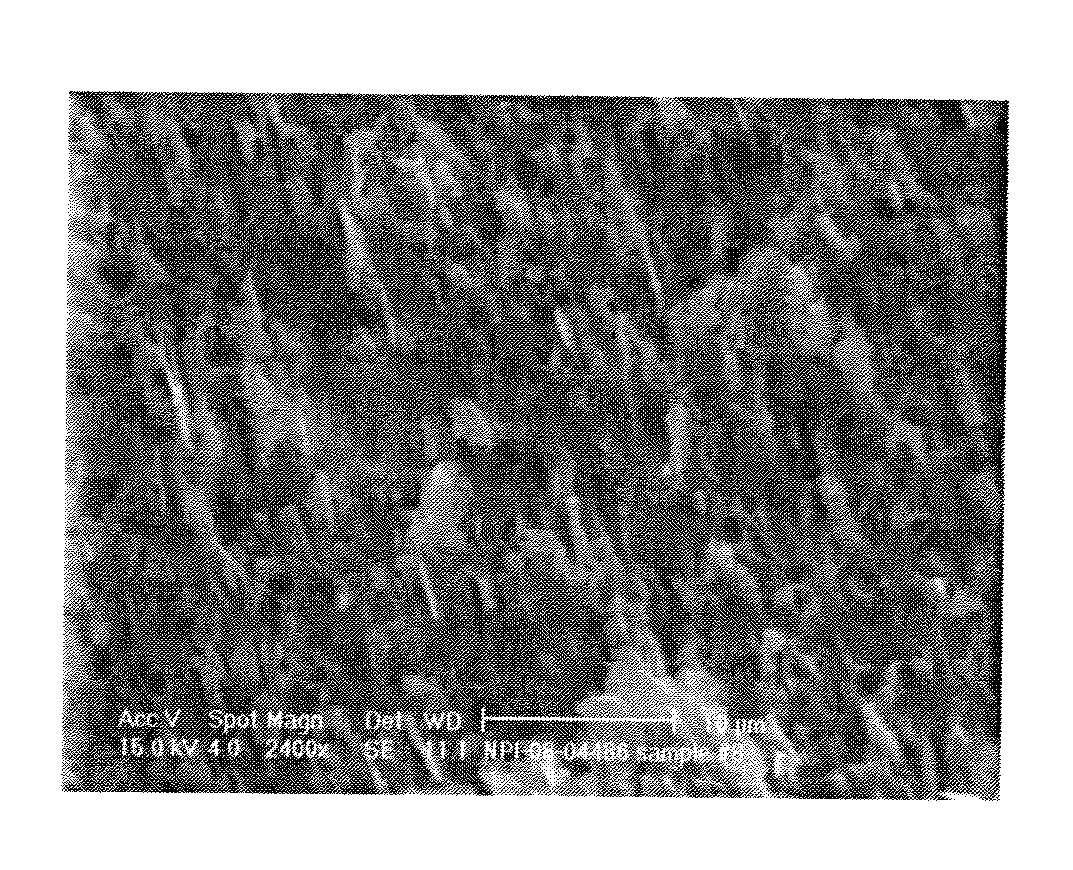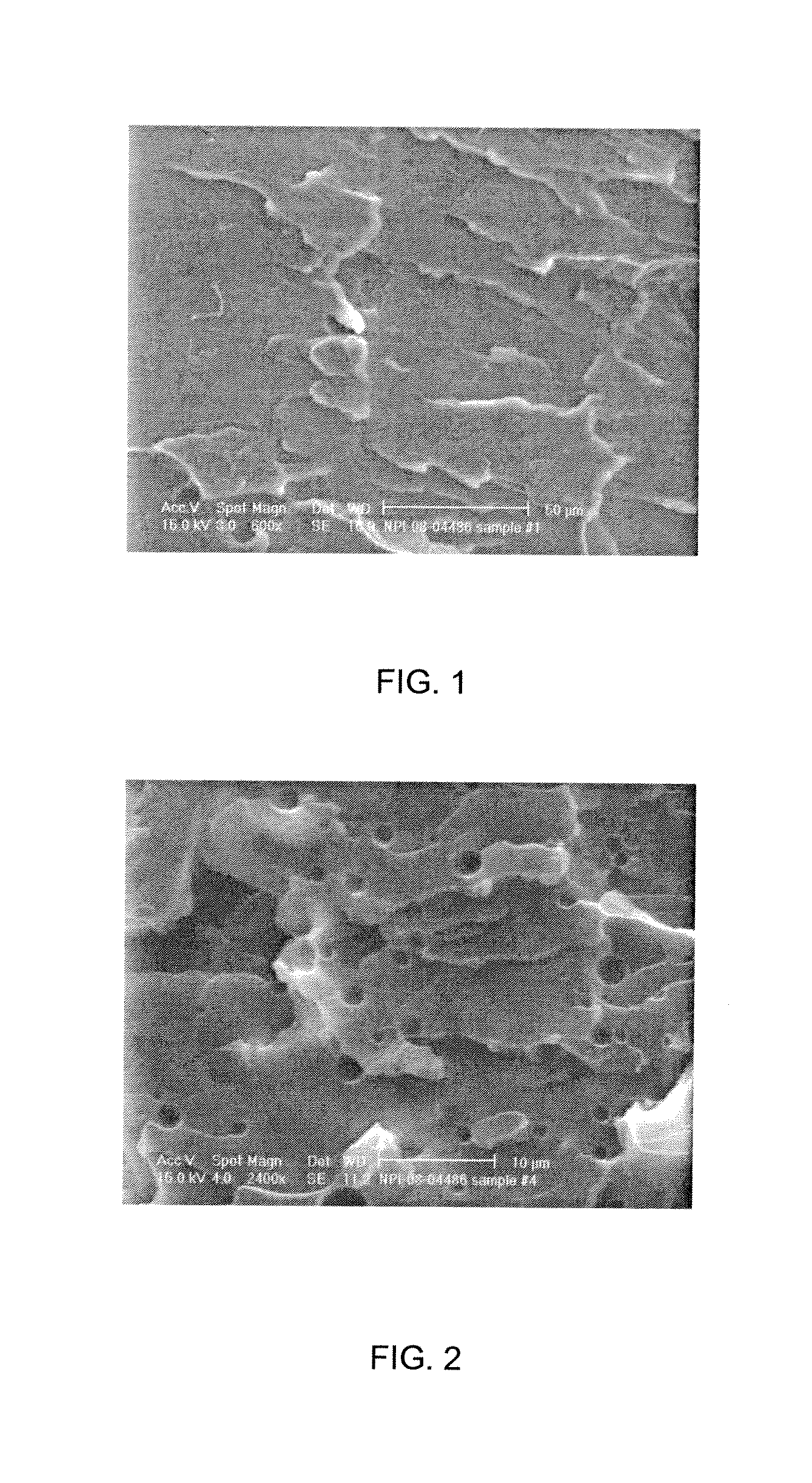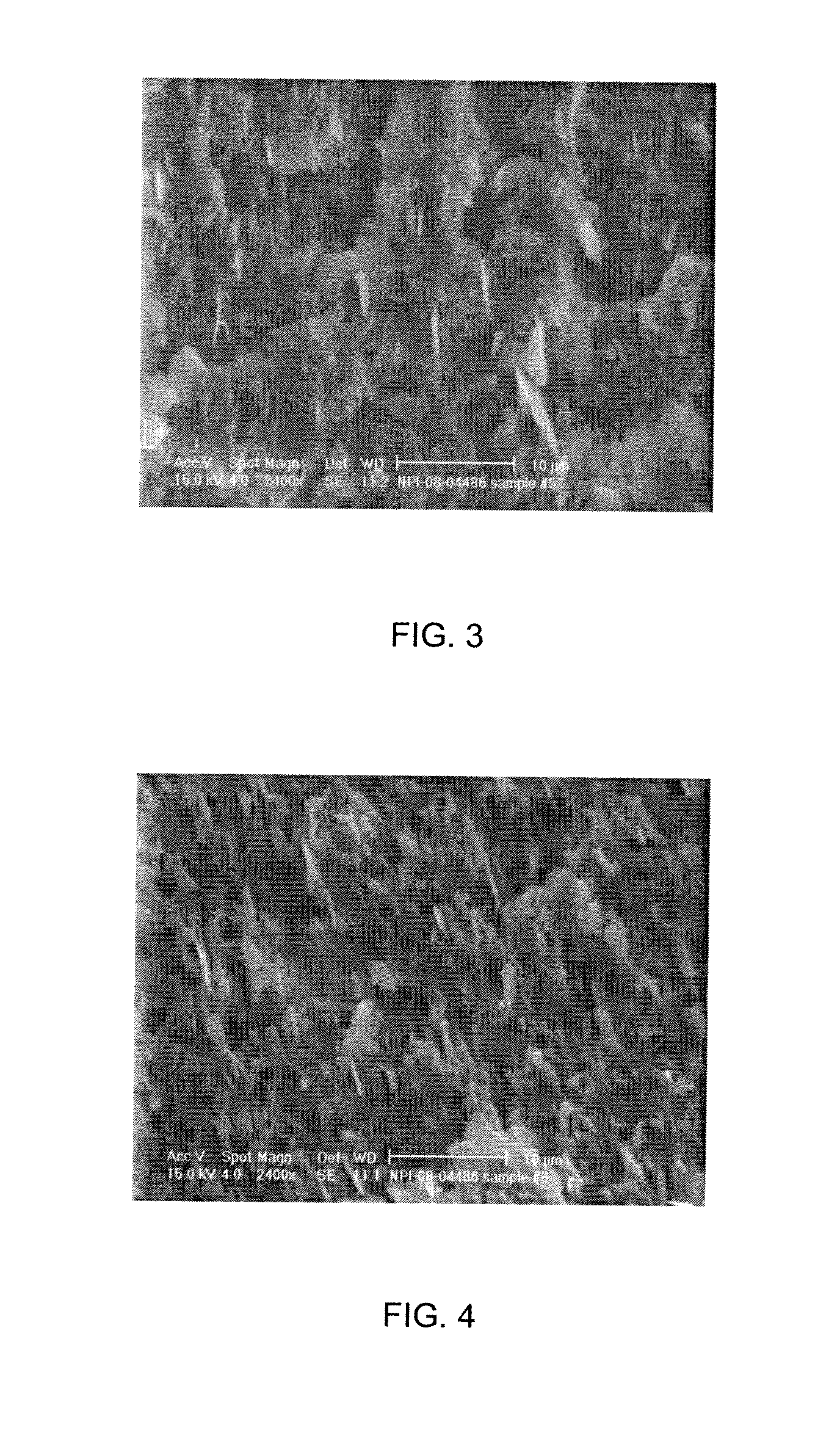Polycarbonate composition with improved impact strength
a polycarbonate composition and impact strength technology, applied in the direction of drug delivery mechanism, dragees, etc., can solve the problems of reducing the ductility and flow properties of polymeric compositions, reducing the flow properties, and reducing the impact resistance of polycarbonates, etc., to achieve the effect of improving the notched izod impact strength of a base composition
- Summary
- Abstract
- Description
- Claims
- Application Information
AI Technical Summary
Benefits of technology
Problems solved by technology
Method used
Image
Examples
example 1
[0153]Two blends, a reference blend R1 and an Example blend E1, were made to compare the effect of adding SAS. The compositions and results are shown in Table 1.
TABLE 1UnitR1E1PC 1 (high Mw)%6059PC 3 (low Mw)%6.716.71SAN 1%9.59.5MBS%4.44.4Talc 1 (1.2 μm)%1818H3PO3%0.540.54SAS%1PETS%0.250.25Phosphite 1%0.10.1PELTP%0.250.25AO-1076%0.250.25MVR260° C. / 5 kgcc / 10 min7.210.0MV 280° C. / 1500 s−1Pa · s340312VicatB120° C.141140INI23° C.ImpactkJ / m28.431.5MAI23° C.Ductility%80100 0° C.Ductility%0100Tensile 5 mm / minModulusGPa4.64.4StrengthMPa63.056.8Elongation%713
[0154]The results in Table 1 show that the Izod notched impact was dramatically improved. Multi-axial impact ductility at both 23° C. and 0° C. also showed a significant improvement. The MVR also increased, which shows an improvement in flow properties. The tensile modulus changed minimally and still maintained a good value over 4 GPa.
examples 2-4
[0155]One reference blends and three Example blends were used to determine the effect of the addition of SAS into polycarbonate, both with and without talc filler. The results of these experiments can be seen in Table 2.
TABLE 2UnitR2E2E3E4PC 1 (high Mw)%504944.8543.85PC 3 (low Mw)%504944.8543.85Talc 1 (1.2 μm)%1010+H3PO3%0.30.3SAS%22MVR260° C. / cc / 1016.970.615.313.75 kg / 4′min260° C. / cc / 1016.389.115.713.85 kg / 18′minRetention%97%126%102%101%MV280° C. / Pa · s335682892541500 s−1VicatB120° C.142135142142INI23° C.ImpactkJ / m210.711.76.948.80° C.ImpactkJ / m210.110.27.016.9−30° C.ImpactkJ / m29.010.06.912.9MAI23° C.Ductility%100801001000° C.Ductility%1002010100−10° C.Ductility%10000100−20° C.Ductility%10002080−30° C.Ductility%930080Tensile5 mm / minModulusGPa2.42.43.53.3StrengthMPa67.259.564.364.9Elongation%1014493102FlexuralModulusGpa2.42.33.43.2StrengthMPa96.391.9102.092.3PC MwPelletskg / 51.242.050.551.4molPartskg / 51.234.948.550.7molRetention%99% 83% 94% 99%
[0156]SAS used in absence of talc (E2) c...
examples 5-14
[0162]Addition of acid to talc can reduce the polycarbonate degradation effect. The optimum level for neutralization of talc was previously found to be 0.03 wt % acid for every 1 wt % of talc. Because the SAS apparently reduced polycarbonate degradation through interaction with the talc, it was possible that the presence of SAS would shift the optimum level of acid, or that there was some interaction between the acid and the SAS itself. Twelve Example blends (E5-E16) were made out to determine the optimum acid to talc ratio and / or optimum acid to SAS ratio. The results are shown in Tables 3A and 3B.
TABLE 3AUnitE5E6E7E8E9E10PC 1 (high Mw)%37.5537.537.4537.437.3537.3PC 3 (low Mw)%37.5537.537.4537.437.3537.3SAN 1%9.59.59.59.59.59.5MBS%4.44.44.44.44.44.4Talc 1 (1.2 μm)%101010101010H3PO3%0.10.20.30.40.5SAS%111111MVR260° C., 5 kg,cc / 10 min22.719.318.718.819.620.04′260° C., 5 kg,cc / 10 min26.523.320.819.520.322.618′Retention%117%121%111%104%104%113%MV280° C. / 1500 s−1Pa · s133148142144150148...
PUM
| Property | Measurement | Unit |
|---|---|---|
| Temperature | aaaaa | aaaaa |
| Temperature | aaaaa | aaaaa |
| Weight | aaaaa | aaaaa |
Abstract
Description
Claims
Application Information
 Login to View More
Login to View More - R&D
- Intellectual Property
- Life Sciences
- Materials
- Tech Scout
- Unparalleled Data Quality
- Higher Quality Content
- 60% Fewer Hallucinations
Browse by: Latest US Patents, China's latest patents, Technical Efficacy Thesaurus, Application Domain, Technology Topic, Popular Technical Reports.
© 2025 PatSnap. All rights reserved.Legal|Privacy policy|Modern Slavery Act Transparency Statement|Sitemap|About US| Contact US: help@patsnap.com



